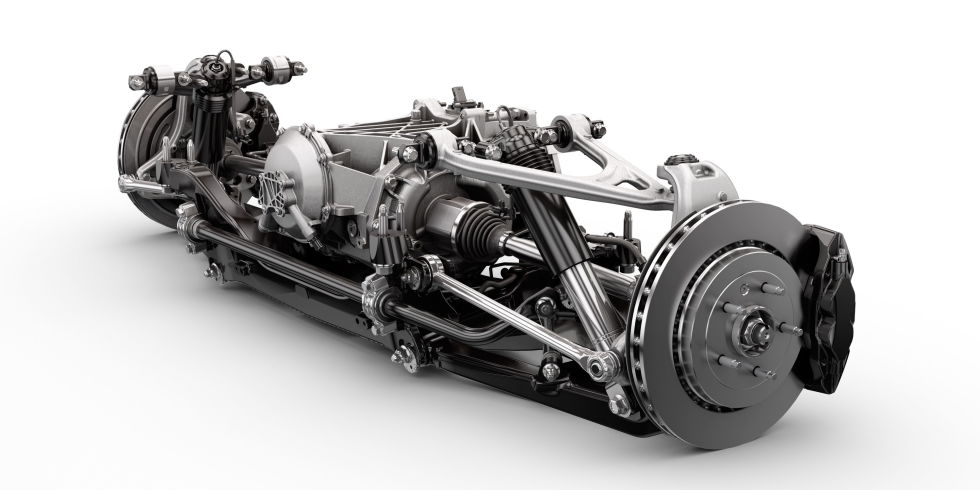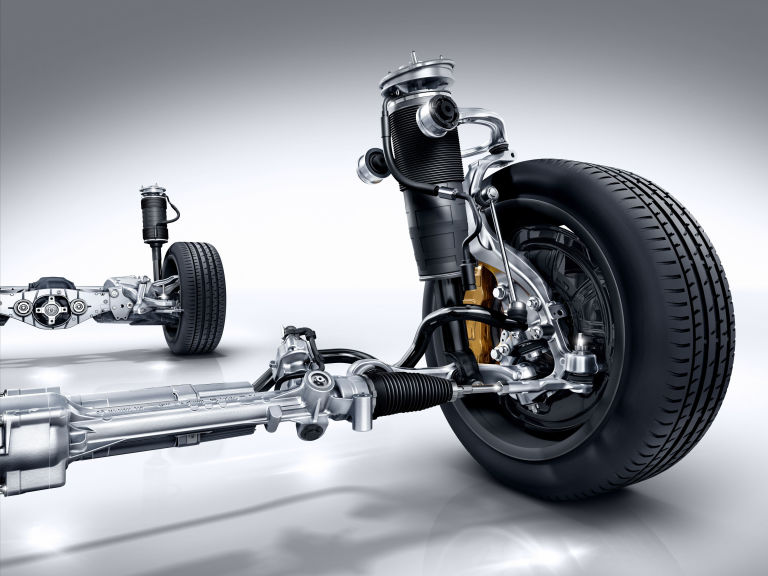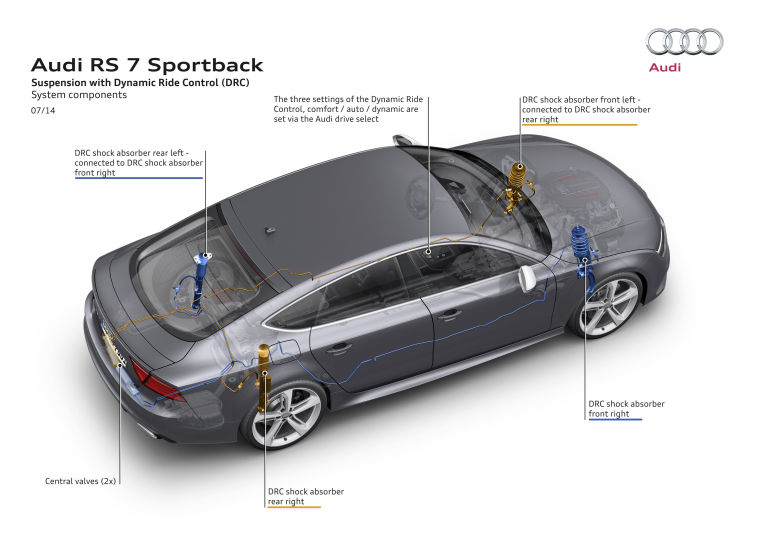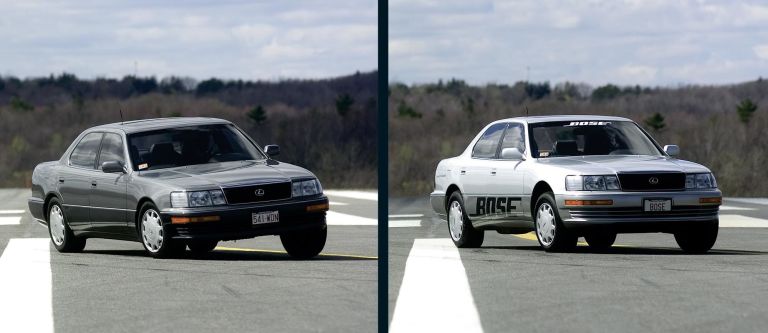The state of the suspension is good. Very good.
 Suspension systems don’t tend to get much publicity, but they’re probably the most crucial factor in the day-to-day enjoyment of your car. Automakers are always tweaking and refining their designs in search of that elusive ideal: a perfect ride coupled with race-worthy handling. We haven’t quite gotten there yet, but the latest systems are better than ever at reconciling the competing goals of comfort and performance. Here are three recent innovations to tide us over until Bose reinvents suspension entirely.
Suspension systems don’t tend to get much publicity, but they’re probably the most crucial factor in the day-to-day enjoyment of your car. Automakers are always tweaking and refining their designs in search of that elusive ideal: a perfect ride coupled with race-worthy handling. We haven’t quite gotten there yet, but the latest systems are better than ever at reconciling the competing goals of comfort and performance. Here are three recent innovations to tide us over until Bose reinvents suspension entirely.
Magnetic Dampers
If you enjoy the magnetic dampers on your Ferrari FF or Audi R8, you can thank General Motors for developing the technology. By varying electric current through a ferrous fluid, Magnetic Ride Control dampers can adjust their stiffness in response to driving conditions. And while the system is licensed to other companies, GM, as the originator, is still out front. Its third-generation Magnetic Ride Control (as seen in select performance cars such as the Chevrolet Corvette Stingray, seen above) improves on prior designs by adding a second wire. Now the fluid can be actively switched from firm to compliant, whereas before there was a lag as the particles naturally returned to their relaxed state. The implication? At sixty miles per hour the Stingray can adjust for each inch of road.
Active Curve Tilting

Mercedes
Motorcyclists can tell you that leaning into a corner feels natural—too bad cars can’t do that. Well, now one can: the 2015 Mercedes-Benz S65 AMG coupe. Using a lateral-acceleration sensor paired to a forward-looking camera, the S65 perceives corners and then uses its air suspension to tilt the body in toward the apex. The goal isn’t higher performance but, rather, increased comfort as the passengers experience lower lateral loads at a given speed. Basically, if the road doesn’t have a nicely banked corner, the car simulates one for its occupants. Proving, yet again, that it’s nice to be rich.
Hydraulic Roll Control

Audi
The 2015 Audi RS 7 is the latest car to gain a hydraulic cross-linked suspension, which Audi dubs Dynamic Ride Control. While conventional suspensions use steel antiroll bars to counteract body roll, hydraulic systems send fluid to the opposite side of the car. When you’re not pulling major g’s, the system stays out of the way, allowing unimpeded wheel travel and a smooth ride. It’s like having huge antiroll bars and no antiroll bars at all, depending on the situation. The vehicles with the best compromise between performance and handling all use some version of this approach. Hydraulic cross-linking isn’t perfect, but it’s the closest thing right now to a full active suspension.
What Happened to the Bose Suspension?
 Back in 2004 Bose revealed that it had been secretly working on an active suspension system since 1980. By using powerful electromagnetic struts, the Bose system could instantly extend or retract any one wheel, with all four corners working in concert to keep the car’s body level. Bose demonstrated the system on a Lexus LS400 outside its headquarters in Framingham, Massachusetts, speeding the car over all manner of obstacles while the body remained completely serene—as a finale, the Lexus gracefully leaped over a piece of lumber in its path. It seemed like the dawn of a new era, and the company predicted that within a few years the system would be available in production cars. More than a decade later, where’s our active suspension?
Back in 2004 Bose revealed that it had been secretly working on an active suspension system since 1980. By using powerful electromagnetic struts, the Bose system could instantly extend or retract any one wheel, with all four corners working in concert to keep the car’s body level. Bose demonstrated the system on a Lexus LS400 outside its headquarters in Framingham, Massachusetts, speeding the car over all manner of obstacles while the body remained completely serene—as a finale, the Lexus gracefully leaped over a piece of lumber in its path. It seemed like the dawn of a new era, and the company predicted that within a few years the system would be available in production cars. More than a decade later, where’s our active suspension?
So far, only in big-rig truck seats, where the Bose Ride mounting system actively nulls shock and vibration before it reaches the driver. But cars are still the main prize, so we asked whether the system could be ready in five years if a car manufacturer committed today. A company spokesman replied, “Yes. Of course, we’d have to work with a car manufacturer on development and customization, but it’s technically feasible. And when the right car customer is ready, we’ll be ready.” So there’s your answer. Now who wants in on the suspension revolution?
Source: PopularMechanic
